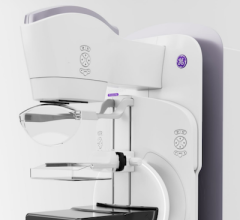The Role of Personalized Breast Cancer Screening

It is once again October, Breast Cancer Awareness Month. The American Cancer Society (ACS) estimates that about 252,710 new cases of invasive breast cancer and 63,410 new cases of carcinoma in situ (CIS) will be diagnosed in 2017. About 40,610 women will die from breast cancer this year.
Only lung cancer beats out breast cancer in women for the leading cause of cancer deaths, and the chance that a woman will die from breast cancer is about 1 in 37, or about 2.7 percent, according to the ACS. Since 2007, breast cancer death rates have been steady in women younger than 50, but have continued to decrease in older women. These decreases are attributed to the result of earlier and better screening procedures and treatments.
Having the topic of breast density in the limelight has also helped to raise awareness, and as of this month, and thanks to many, many hours of dedicated work from industry lobbyists, 30 states now require some level of patient density notification, according to densebreast-info.org.
Monica Saini, M.D., medical director — ABUS at GE Healthcare, says it’s an exciting time to be a breast radiologist “because we no longer have to prescribe to a one-size-fits-all screening exam,” she said in the itnTV video “Innovative Breast Cancer Screening for Women with Dense Breast Tissue.” In it, she discusses the advancements for women in personalized breast care, and how automated breast ultrasound (ABUS) helps meet the challenges of screening and diagnostic imaging of dense breast tissue.
“Instead of prescribing to this system, we can use a multimodality approach to individualize each woman’s breast care,” she explained, stating that the industry now has new tools, like risk assessment, and knows to look at the personal history of each patient, her family history of cancer and her personal biology, which is best demonstrated by breast density. “Using these tools together, we can come up with an individualized plan for each patient. We start with the gold standard of screening mammography.
“Now we have new advancements in technology with tomosynthesis that allows us to reduce the callback rate,” she continued. “But we have even newer technologies like automated breast ultrasound which allow us to screen dense breasted patients, which is about 40 percent of the population. When we use these tools together, we have a synergistic type of effect. So the magic is we find more cancer. And that’s the ultimate goal for a breast radiologist is to increase our cancer detection rate but decrease our false positives. New technology has given us game-changing applications that can be applied to breast imaging.”
You can watch the full video with Saini at http://bit.ly/2jI6KF2. In this issue, ITN is premiering its automated breast ultrasound systems comparison chart. You can review the system specs from participating companies on page 47
of this issue.



 December 10, 2025
December 10, 2025 








